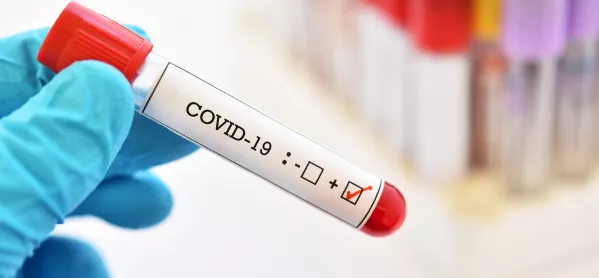The Department for Education is no longer publishing data about the number of schools that are partially closed because of Covid-19.
The DfE has decided to stop asking schools whether or not they are fully open as part of wider changes to the way it collects information on attendance.
The figure had been included in the weekly attendance data that the DfE has published since the start of the academic year. The figure has been declining week on week.
Isolating: Nearly half of secondaries have pupils off after potential contact with Covid case inside school
Data: More than one in five secondary schools not fully open
Warning: Schools told they ‘needn’t bother’ calling DfE advice line with new coronavirus cases
The figures had shown that the proportion of fully open secondary schools fell from 92 per cent on 17 September to 84 per cent a week later. It then dropped again to 82 per cent and again last week to 79 per cent.
As of today, the DfE is instead publishing a new figure showing how many schools have one or more pupils self-isolating as a result of potential contact with a Covid case inside their school.
Today, it reveals that this is the case in more than a fifth of schools (21 per cent) and in almost half (46 per cent) of state secondary schools.
This figure is not comparable with the previous week’s figures for the proportion of schools that are partially closed.
A Department for Education spokesperson said: “The question we are asking has fundamentally changed. Previously, a subset of schools and colleges were asked about groups of pupils isolating.
“Now, all schools are asked about whether one individual pupil or more is isolating. The data is reported as having ‘at least one pupil’ self-isolating due to potential contact inside the setting”.
In a document explaining how its data is collected, the DfE said that between 1 September and 9 October, schools and colleges were asked to report as “fully open” or “not fully open” to identify those affected by Covid-19.
Schools were asked to report as “not fully open” if:
- A group of pupils without Covid-19 symptoms themselves or in their households had been asked to self-isolate.
- They were unable to provide face-to-face teaching for all pupils for the whole of the normal school day.
- They were not open to all year groups.
- They were not open to pupils because of a training or Inset day.
The DfE document adds: “To reduce the burden of data collection on settings, only those that self-identified as ‘not fully open’ due to ‘suspected or confirmed cases of Covid-19’ were asked to report how many pupils had a confirmed case, suspected case or had been requested to remain at home due to potential contact with a case.
“From 12 September, all responding schools and colleges are asked to report pupils in the following categories: suspected case of coronavirus; confirmed case of coronavirus; requested to remain at home due to potential contact with a case of coronavirus inside your educational setting; those remaining at home due to potential contact with a case of coronavirus from outside your educational setting including self-isolation.
“We now report the number and proportion of schools that have requested one or more pupils to remain at home due to potential contact with a case of coronavirus (Covid-19) inside their educational setting.
“This is not comparable to previous data on schools ‘not fully open’, which intended to capture schools with ‘a group’ of such pupils.”




